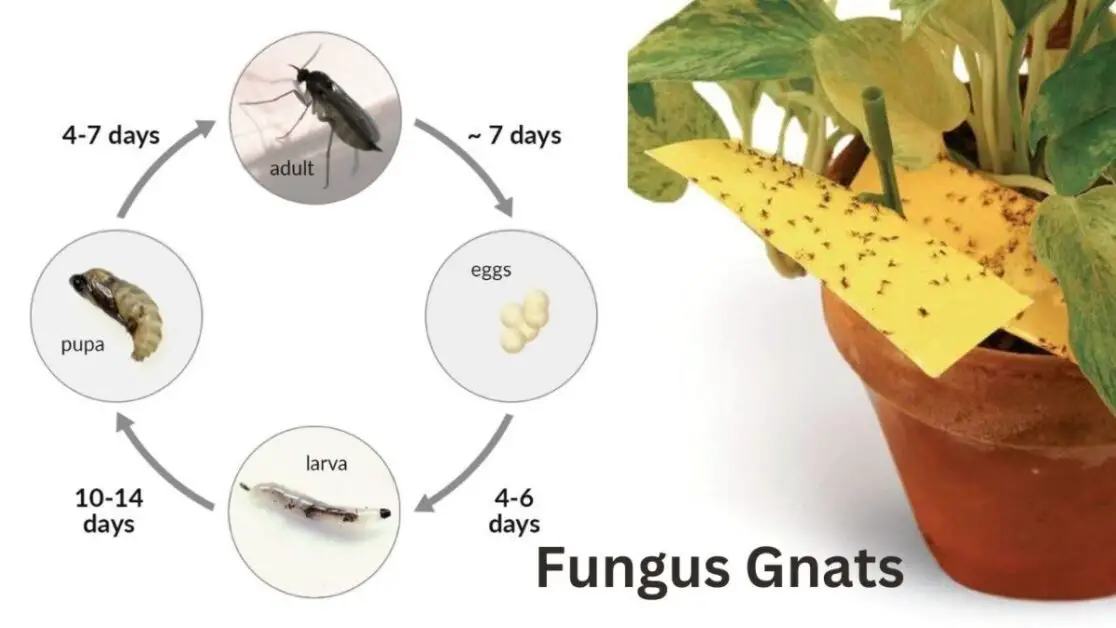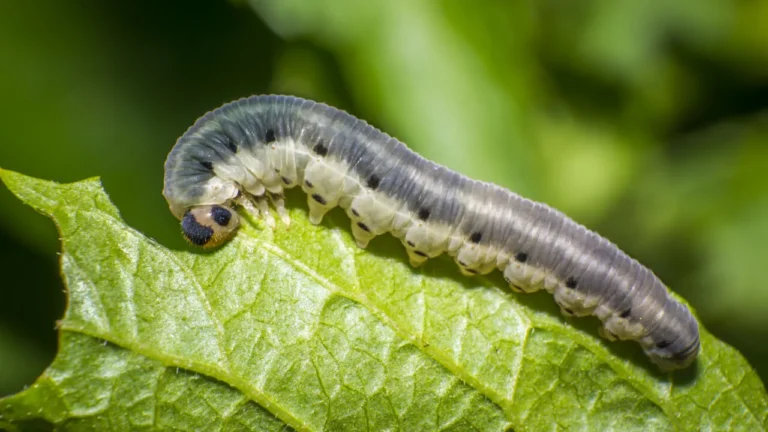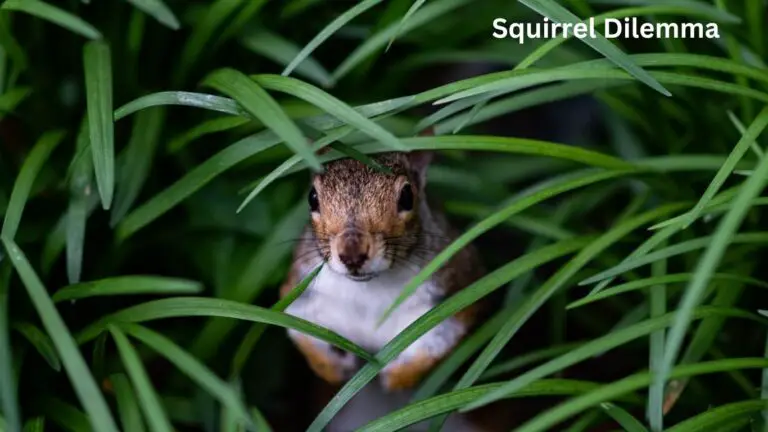Fungus Gnats: Best Way to Prevent and Remove Them from Your Grow Room
Fungus Gnats: How to Prevent and Remove Them from Your Grow Room
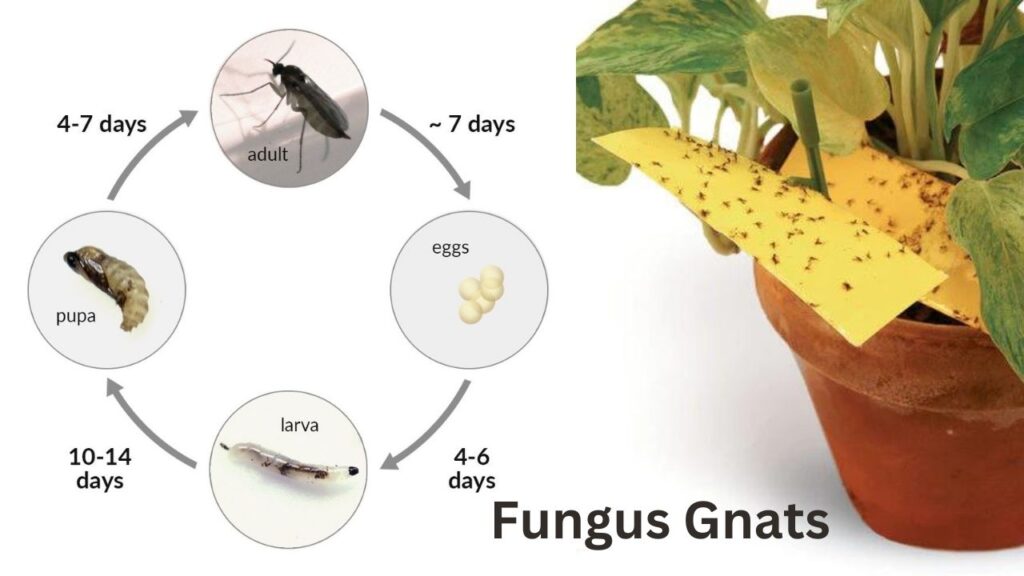
Understanding the Threat: Identifying Fungus Gnats and Their Impact on Your Grow Room
Fungus gnats (Sciaridae) may seem like tiny harmless insects, but these pests can wreak havoc on your grow room if left unchecked. Identifying these pesky critters is the first step in preventing and eliminating their presence. Fungus gnats are small flies, usually measuring around 1/8 inch in length, with delicate wings and long legs. While they may resemble fruit flies, their distinct feature is their gray or black coloration. These pests are commonly found in damp and humid environments, making grow rooms an ideal breeding ground for them.
Besides the annoyance of having flies buzzing around your plants, fungus gnats can cause significant damage to your crops. Their larvae live in soil or growing media, feeding on the organic matter and even the roots of your plants. As they munch away, the larvae weaken the plants’ root system, hindering nutrient uptake and stunting their growth. This can lead to wilting, yellowing leaves, and overall poor plant health. Moreover, these tiny invaders can also carry and spread harmful fungal pathogens, further compromising the health of your plants.
1. Understanding the Threat: Identifying Fungus Gnats and Their Impact on Your Grow Room
Fungus gnats may seem like small, harmless creatures that buzz around your grow room, but their impact can be significant. These tiny insects can quickly become a nuisance and cause serious damage to your plants if left unaddressed.
One of the key identifiers of fungus gnats is their appearance. Adult fungus gnats are small, black flies that resemble mosquitoes, with long legs and delicate wings. However, it is the larvae that cause the most trouble. These larvae are typically white and worm-like, often found in the soil or growing medium of your plants. They feed on organic matter and plant roots, disrupting the nutrient uptake process and weakening the overall health of your plants.
The presence of fungus gnats can lead to a range of problems in your grow room. Firstly, their constant buzzing can be a major annoyance and can distract you from your gardening tasks. Additionally, the larvae can damage the root systems of your plants, affecting their ability to grow and thrive. This can result in stunted growth, yellowing leaves, and a decrease in overall yield. Furthermore, fungus gnats are known carriers of plant pathogens, including harmful fungi and bacteria. These pathogens can spread to your plants, causing diseases and potentially leading to crop losses.
Understanding the threat that fungus gnats pose to your grow room is essential in order to prevent and mitigate any potential damage. By identifying their presence and becoming familiar with their impact, you can take proactive measures to keep them at bay and maintain a healthy growing environment for your plants.
2. Identifying the Causes: Exploring the Common Factors that Attract Fungus Gnats to Your Grow Room
Fungus gnats can be a persistent nuisance in your grow room, but understanding the common factors that attract them is the first step in preventing their infestation. One key reason these tiny pests are drawn to your grow room is excessive moisture. Fungus gnats thrive in damp environments, making areas with high humidity or overwatered plants particularly appealing to them.
Another factor that attracts fungus gnats is organic matter in the soil. These pests lay their eggs in organic-rich soil, which serves as their primary food source. Therefore, using soil that contains a high percentage of decomposing plant material or using soil that hasn’t been properly sterilized can invite fungus gnats into your grow room.
3. Maintaining Cleanliness: The Importance of Proper Sanitation Practices in Preventing Fungus Gnats
Maintaining cleanliness in your grow room is essential when it comes to preventing fungus gnats. These tiny pests thrive in moist and decomposing organic matter, making hygiene practices a crucial aspect of pest control. By adopting proper sanitation practices, you can significantly reduce the risk of fungus gnat infestations.
Regularly clean and sterilize all equipment, surfaces, and containers in your grow room to eliminate any potential breeding sites for these pests. Avoid leaving any organic debris or decaying plant matter lying around, as this provides an ideal environment for fungus gnats to thrive. Implementing a strict cleaning schedule will go a long way in preventing their infestation and ensuring the health of your plants. Additionally, disposing of any infected or decaying plants promptly will help limit the spread of fungus gnats and other pathogens.
4. Managing Moisture Levels: Controlling Excess Moisture to Deter Fungus Gnats from Infesting Your Grow Room
Excess moisture in a grow room can create the ideal breeding environment for fungus gnats. These pesky insects thrive in damp conditions, using the moist soil as a prime breeding ground. To effectively control and deter fungus gnats from infesting your grow room, it is crucial to manage moisture levels.
One important step in managing moisture levels is to avoid overwatering your plants. While it’s vital to provide adequate moisture for plant growth, excessive watering can lead to waterlogged soil, which fungus gnats find particularly appealing. Instead, it is recommended to water your plants based on their specific needs and the type of medium you are using. Regularly check the moisture content of the soil and adjust watering accordingly.
Additionally, proper drainage is essential for preventing excess moisture in your grow room. Ensuring that your pots or containers have adequate drainage holes allows water to escape easily, reducing the risk of water accumulation. Consider using saucers or trays underneath the pots to catch excess water and empty them regularly. Proper airflow in your grow room can also help in drying out the soil faster, reducing the chances of attracting fungus gnats.
5. Soil Choice and Preparation: Selecting the Right Soil and Preparing it to Minimize Fungus Gnat Infestation
When it comes to minimizing fungus gnat infestations in your grow room, selecting the right soil and preparing it properly is crucial. The type of soil you choose can make a significant difference in deterring these pesky insects. Opt for a well-draining soil mix that is specifically designed for indoor gardening or hydroponics. These types of soil blends are typically lightweight, allowing for optimal root oxygenation while minimizing excess moisture that fungus gnats thrive on.
Additionally, consider incorporating beneficial amendments into your soil mixture. Adding perlite, vermiculite, or coconut coir can improve drainage and aeration, creating an unfavorable environment for fungus gnats to breed. These amendments not only enhance soil structure but also encourage healthy root development, promoting stronger and more resilient plants.
Once you have selected the appropriate soil mix, it’s essential to prepare it correctly before planting. Start by ensuring the soil is free from any debris, clumps, or pests. Sterilizing the soil by baking it in the oven at a low temperature for a short period can also help eliminate any potential fungus gnat eggs or larvae. Remember to let the soil cool down completely before use to avoid damaging the beneficial microorganisms necessary for plant growth.
By being mindful of your soil choice and taking the time to prepare it properly, you can significantly minimize the risk of fungus gnat infestations in your grow room. A well-draining soil mix with adequate amendments will not only support healthy plant growth but also discourage unwanted pests from taking up residence in your garden.
6. Effective Drainage Solutions: Implementing Drainage Systems to Prevent Standing Water and Fungus Gnat Breeding
Effective drainage is an essential aspect of preventing standing water and fungus gnat breeding in your grow room. These tiny pests thrive in moist environments, making it crucial to implement proper drainage systems to maintain a dry and unfavorable habitat for them.
One effective drainage solution is the use of raised beds or containers with drainage holes. This allows excess water to flow out of the growing medium, preventing it from becoming waterlogged and creating a breeding ground for fungus gnats. Additionally, using well-draining substrates such as perlite or vermiculite mixed with soil can further enhance drainage and discourage the growth of fungus gnats.
Another effective method is the installation of a drainage system that collects and redirects excess water away from the grow room. This can be achieved by incorporating slopes or channels that direct water towards drains or collecting reservoirs. By ensuring proper disposal of excess water, you can significantly reduce the chances of standing water and fungus gnat infestations in your grow room.
Remember, implementing effective drainage solutions is crucial in maintaining a dry environment that discourages fungus gnats from breeding and infesting your grow room. By promoting proper water flow and preventing stagnant water, you can create an inhospitable environment for these pests, ultimately safeguarding the health and productivity of your plants.
7. Natural Predators: Utilizing Beneficial Insects and Nematodes to Combat Fungus Gnats in Your Grow Room
Natural predators can be a valuable tool in combatting fungus gnats in your grow room. Beneficial insects and nematodes are often utilized to help control these pesky pests. The introduction of these organisms into your grow room can help to naturally reduce fungus gnat populations and prevent future infestations.
One popular beneficial insect for controlling fungus gnats is the predatory mite. These tiny mites feed on the larvae of fungus gnats, effectively reducing their numbers. Another option is the use of predatory beetles, such as rove beetles, which actively seek out and consume fungus gnat larvae. Nematodes, microscopic roundworms that are safe for plants and humans, can also be introduced into the soil to target and destroy fungus gnat larvae. These natural predators offer a sustainable and environmentally friendly solution to managing fungus gnat populations in your grow room.
8. Sticky Traps and Barriers: Using Sticky Traps and Physical Barriers to Catch and Prevent Fungus Gnats from Entering Your Grow Room
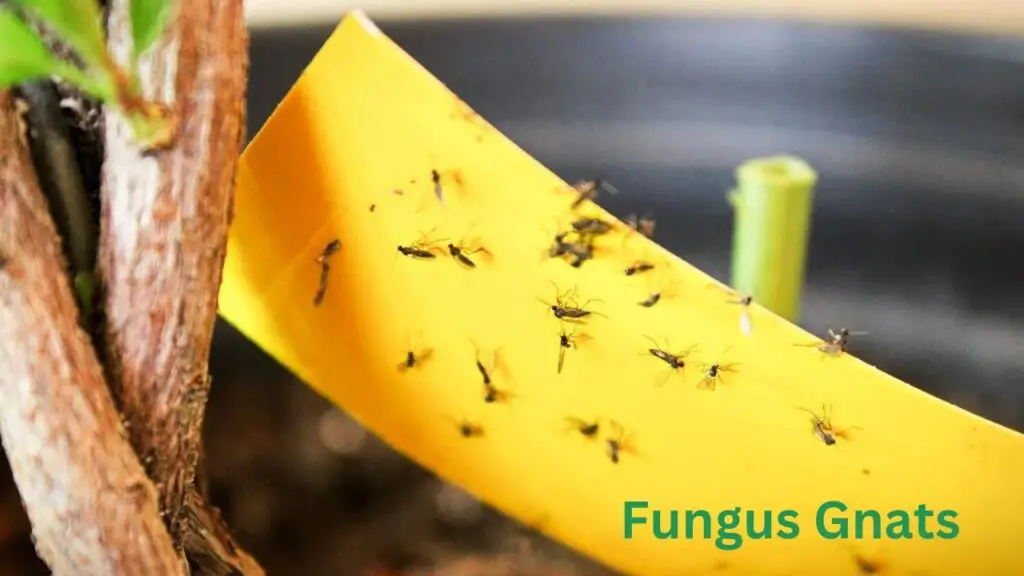
Sticky traps and physical barriers are highly effective tools in the fight against fungus gnats in your grow room. These simple yet powerful methods can help catch and prevent these pesky insects from infesting your plants.
Sticky traps, also known as yellow traps, work by attracting fungus gnats and other flying pests with the color yellow. The sticky surface of the trap captures the insects, preventing them from moving around and laying their eggs. By strategically placing these traps around your grow room, you can significantly reduce the number of fungus gnats in the environment.
Physical barriers, on the other hand, create a physical hurdle that fungus gnats struggle to overcome. This can include placing a fine mesh netting over the openings of your grow room or using screens on windows and vents to prevent the pests from entering. These barriers not only keep fungus gnats out but also act as a preventive measure for other pests that may pose a threat to your plants. By combining sticky traps and physical barriers, you can create a defense system that effectively catches and deters fungus gnats from entering your grow room.
Here’s a table with information about dealing with fungus gnats:
| Aspect | Details |
|---|---|
| Identification | Small, mosquito-like insects with dark bodies and long legs. Often seen around soil or flying near plants. |
| Lifecycle | – Egg: Laid in soil. – Larva: White, worm-like larvae in soil. – Pupa: Develops in soil. – Adult: Emerges and flies around plants. |
| Preferred Environment | Moist, organic-rich soil. Fungus gnats thrive in damp conditions. |
| Plant Damage | Larvae feed on organic matter, plant roots, and fungi, potentially leading to weakened plants and poor growth. |
| Prevention | – Allow the soil to dry between watering. – Use well-draining soil or growing medium. – Avoid overwatering. – Keep the growing area clean. |
| Yellow Sticky Traps | Place yellow sticky traps near plants to catch adult fungus gnats. |
| Diatomaceous Earth | Sprinkle food-grade diatomaceous earth on the soil surface. Larvae are physically damaged by the abrasive particles. |
| Neem Oil | Apply neem oil to the soil. It disrupts the life cycle of fungus gnats and acts as a natural insecticide. |
| Beneficial Nematodes | Introduce beneficial nematodes to the soil. They prey on fungus gnat larvae. |
| Biological Controls | Predatory insects like rove beetles or predatory mites can be introduced to control fungus gnat populations. |
| Hydrogen Peroxide | Use a diluted hydrogen peroxide solution (1 part 3% hydrogen peroxide to 4 parts water) for watering. It can kill larvae and aerate the soil. |
| Systemic Insecticides | Consider using soil drenches with systemic insecticides. Follow product instructions carefully. |
| Cultural Practices | – Allow the topsoil to dry between watering. – Bottom watering to avoid keeping the topsoil excessively moist. – Remove decaying plant matter from the soil surface. |
| Persistent Infestations | If the infestation persists, consider repotting plants with fresh, sterile soil to eliminate larvae and pupae. |
| Regular Monitoring | Regularly check plants, especially in the early stages, for signs of adult gnats, larvae, or damage. |
| Integrated Pest Management | Implement a combination of preventive measures, monitoring, and control methods for effective management. |
| Learning Resources | Various online resources, forums, and gardening guides provide detailed information on dealing with fungus gnats. |
This table provides an overview of key aspects related to dealing with fungus gnats, including identification, prevention, and various control methods. Adjustments may be needed based on the severity of the infestation and specific plant care conditions.
9. Biological Controls: Understanding and Implementing Biological Control Methods to Eliminate Fungus Gnats
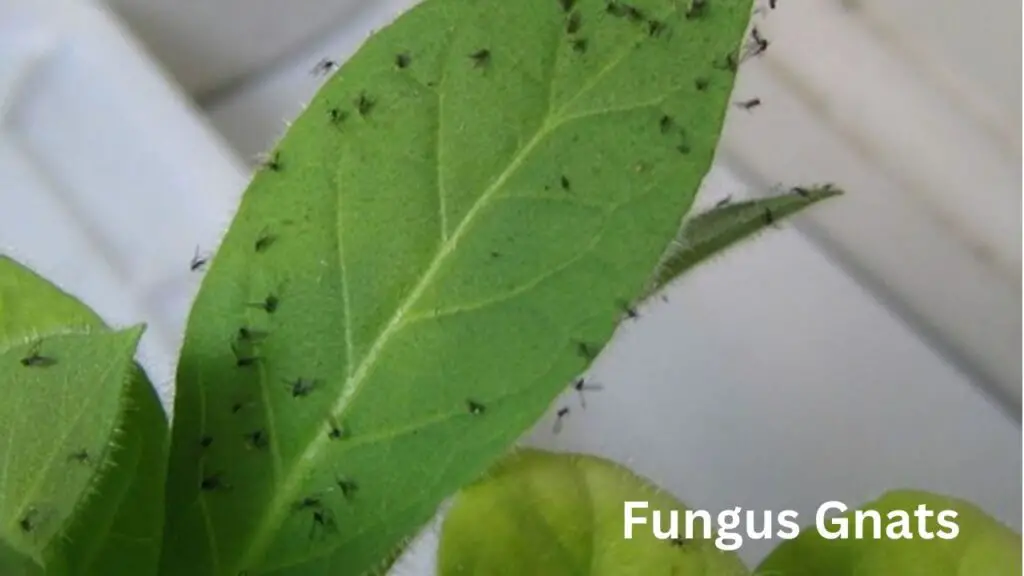
Biological control methods offer an effective and environmentally friendly solution to eliminate fungus gnats in your grow room. By harnessing the power of nature’s own predators, you can significantly reduce or even completely eliminate the population of these troublesome pests. Beneficial insects, such as predatory mites and parasitic wasps, can be introduced into your grow room to prey on fungus gnat larvae, effectively controlling their numbers.
Predatory mites, such as Hypoaspis miles, are highly effective at targeting fungus gnat larvae in the soil. These tiny mites feed on the larvae, preventing them from reaching maturity and causing further damage to your plants. Additionally, certain species of parasitic wasps, like the tiny wasp named Aphidoletes aphidimyza, lay their eggs inside fungus gnat larvae. As the wasp larvae hatch, they consume the inner tissues of the larvae, ultimately leading to their demise.
Implementing biological control methods to eliminate fungus gnats requires careful consideration and understanding of the life cycle and habits of these pests. It is vital to follow the recommended application rates and timing for the introduction of beneficial insects. Moreover, it is crucial to monitor the population levels of both fungus gnats and the beneficial insects to ensure an optimal balance that effectively controls the pests while minimizing any adverse impact on your plants. By incorporating biological controls, you can enhance the long-term sustainability and health of your grow room.
10.
Biological controls have gained recognition as an effective method for eliminating fungus gnats in grow rooms. These controls involve the use of natural predators that feed on fungus gnat larvae or adults, reducing the population and preventing further infestation. One example of a biological control is the introduction of beneficial insects, such as predatory mites or nematodes, which actively seek and consume fungus gnat larvae. These biological controls offer a sustainable and eco-friendly approach to managing fungus gnat problems, as they do not involve the use of harmful pesticides. Incorporating these natural predators into your grow room can provide long-term solutions and maintain a healthy growing environment for your plants.
Additionally, sticky traps and physical barriers can be valuable tools in the battle against fungus gnats. Sticky traps, typically yellow or blue in color, are designed to attract and capture flying adult gnats. They can be strategically placed near suspected entry points or areas of high gnat activity. Physical barriers, such as fine mesh screens, can be installed to prevent adult gnats from entering the grow room. By actively trapping or deterring adult gnats, these methods help disrupt the reproduction cycle and reduce the population. While they may not completely solve the problem, combining sticky traps and barriers with other preventative measures can significantly contribute to the overall control of fungus gnats in your grow room.
Can fungus gnats harm my plants?
Yes, fungus gnats can harm plants by feeding on their roots and causing damage to the root system, which can lead to stunted growth and nutrient deficiencies.
Are fungus gnats attracted to certain types of plants?
Fungus gnats are attracted to moist environments and organic matter, so they can infest a wide range of plants. However, they are particularly attracted to plants that are grown in damp soil or have decaying organic matter present.
Can fungus gnats spread diseases to plants?
While fungus gnats themselves do not typically spread diseases to plants, their presence can create favorable conditions for fungal pathogens to thrive, which can then harm the plants.
Will keeping my grow room clean prevent fungus gnat infestations?
Maintaining cleanliness in your grow room is crucial in preventing fungus gnat infestations. Regularly removing plant debris, cleaning up spills, and practicing proper sanitation can greatly reduce the likelihood of attracting fungus gnats.
Can using sticky traps alone eliminate fungus gnats?
Sticky traps can be helpful in catching adult fungus gnats, but they may not completely eliminate the problem. It is important to address the underlying causes of the infestation, such as moisture control and soil preparation, in conjunction with using sticky traps for best results.
How do natural predators help control fungus gnats?
Natural predators, such as beneficial insects and nematodes, can prey on fungus gnat larvae and help to control their population. These predators can be introduced into your grow room as a biological control method.
What are some common biological control methods used against fungus gnats?
Common biological control methods against fungus gnats include using Bacillus thuringiensis israelensis (BTI), a type of bacteria that specifically targets fungus gnat larvae, and applying beneficial nematodes that feed on the larvae.
Can I use chemical pesticides to control fungus gnats in my grow room?
While chemical pesticides can be effective in controlling fungus gnats, they should be used with caution in a grow room setting. It is important to choose pesticides that are safe for use around plants and follow the instructions carefully to minimize any potential harm to your plants or yourself.
Is it possible to prevent fungus gnats entirely?
While it may be difficult to completely prevent fungus gnats, implementing proper preventative measures such as maintaining cleanliness, controlling moisture levels, and using biological controls can significantly reduce the risk of infestations in your grow room.
Should I be concerned about fungus gnats spreading to other areas of my home?
Fungus gnats are primarily attracted to damp environments and organic matter, so they are unlikely to spread to other areas of your home unless those areas also provide suitable breeding conditions. However, it is still important to address and eliminate the infestation to prevent any potential spread.

